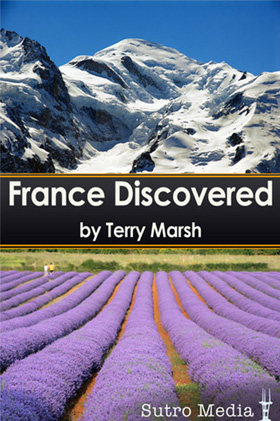black diamonds
more about truffles
Passion can be a volatile commodity in the wrong hands, but when it comes from the heart of a master chef it invariably transforms into something quite wondrous.
Restaurant Christian Etienne, Avignon: preparing black truffles from Vaucluse (Tuber Malanosporum) in the kitchen. © ATOUT FRANCE/Michel Angot
Take the case of Christian Etienne, Maître Cuisinier de France, from Avignon. Amid the modestly understated elegance of his eponymous restaurant adjacent to the Palais des Papes, he prepares his cuisine with an intense pride, cultivated in the kitchens of his mother and grandmother and developed in the restaurants of Paris, that has earned him one Michelin star already.
During
the summer months, his menus favour the colours, perfumes and produce of
Provence – sun-dried tomatoes, olive oil, Provençal herbs – and the fish of the
Mediterranean – monkfish, red mullet, sea bass, lobster and cuttlefish – but in
winter his stage supports quite a different act, for then it is the time of the
truffle, or la rabasse as they call it here. Throughout France, and much
further afield, Christian Etienne is regarded as a master of the truffle, a
culinary wizard for whom la magie de la Rabasse is simply spell-binding.
‘The
truffle,’ he told me, ‘is an object of intense desire, like a nugget of gold.’
He paused: ‘Non’, he said on reflection, ‘to the rabassier or the
gourmand, the truffle is more precious than gold.’
I
looked for the mischievous twinkle in his eye, but there was none. He was
serious.
In
his book, La Magie de la Rabasse, Christian describes the ritual of the
gourmand as a dish containing truffles is laid before him.
‘First,
he uses his nose to gauge the aroma of the truffle, half-closing his eyes in
order not to distract his senses. Then, still with his eyes half-closed, he
leans forward over his plate inhaling deeply and wrinkling his brow in a
gesture of delight before smiling approvingly to the other guests.’ This single
appreciative act is reward enough for the chef: ‘It’s an involuntary thing,
something you are not aware of doing’, Christian told me.
I
know he’s right, because that’s exactly what I did.
In A
Year in Provence, Peter Mayle portrays the secretive world of the truffle
and the truffle hunter (the rabassier or the caveur), where ‘men
stand in tight, preoccupied groups looking, sniffing and finally weighing
wart-encrusted, earth-cover lumps that are handled with reverential care.’
In
Carpentras, the market is held from 8-10am each Friday from the Friday before
the beginning of the Saint-Siffrein Fair (27 November) until the end of March,
in Place Aristide Briand opposite the Hôtel Dieu, a usually peaceful square
surrounded by plane trees. In summer, there’s no clue to its winter identity;
just another delightful square in another lovely Provençal town.
There are no loud colours here, no-one stands out, Hessian sacks, panniers, bowls and other vessels are full of black lumps of earth, and within minutes the air is laden with the distinctive aroma of truffles – you can’t describe it, but once experienced it is never forgotten.
This website was built using Site Build It!







